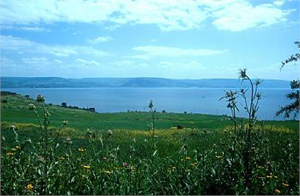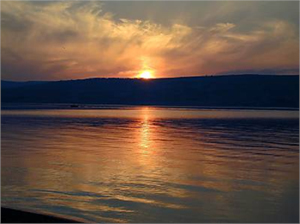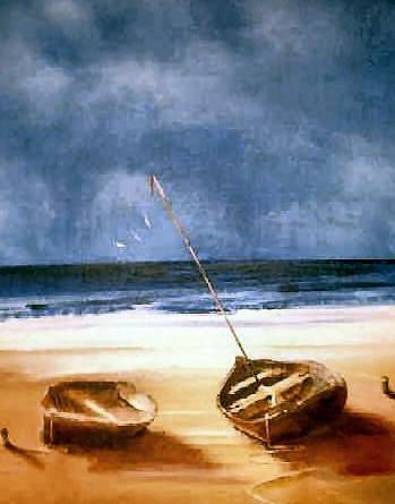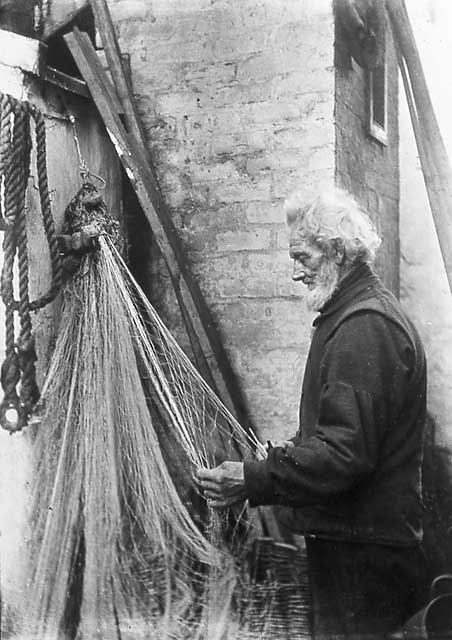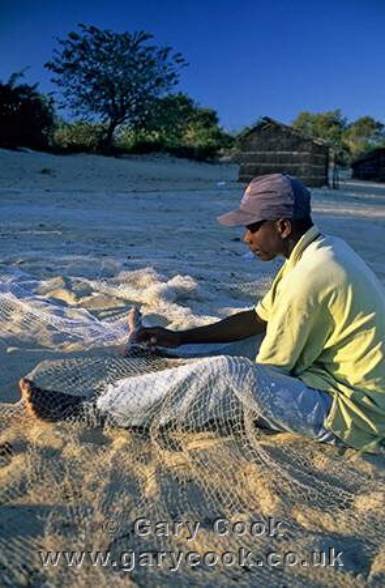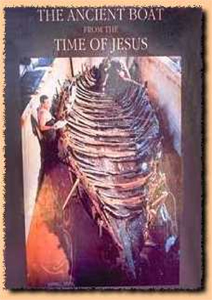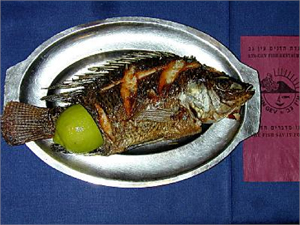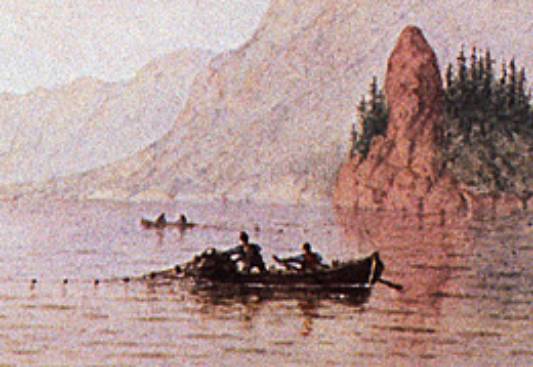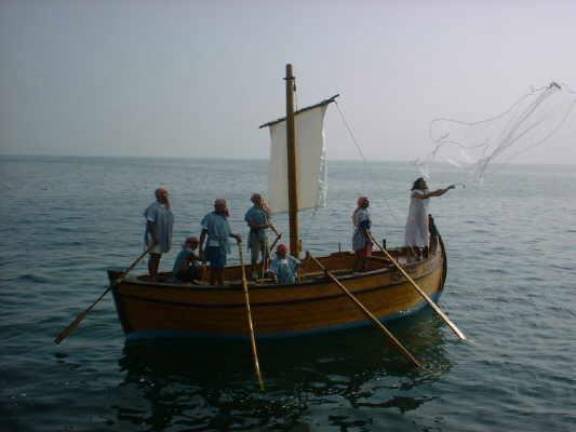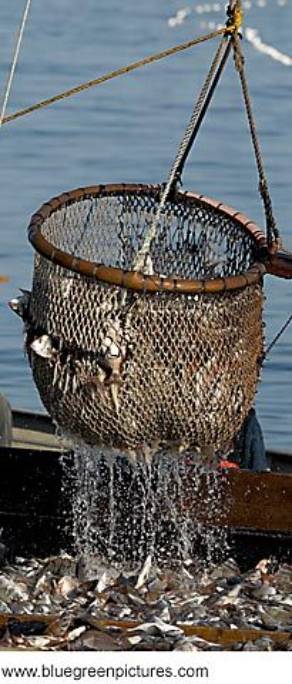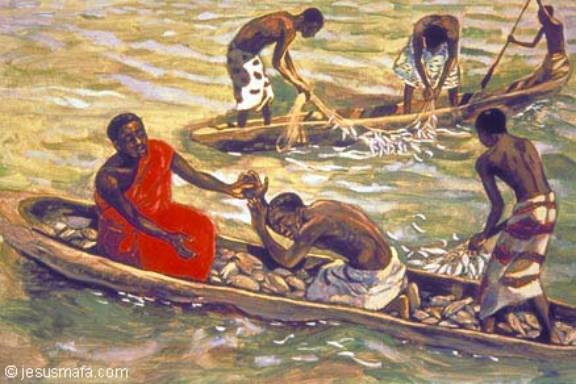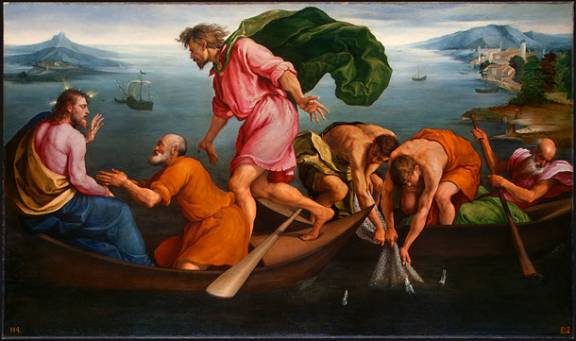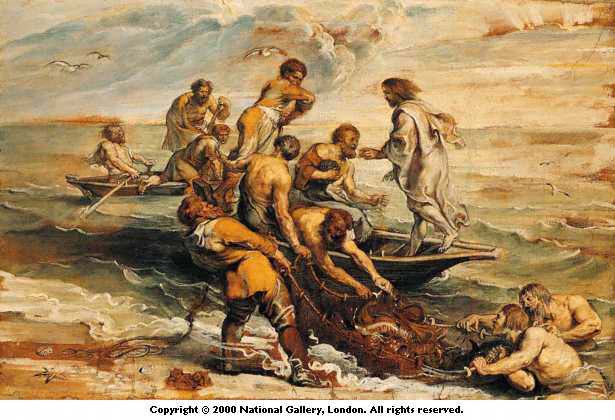
Christmas
Easter
Pentcoest
All Saints
Christ The King
Confirmation
Palm/Passion
Reformation
Stewardship
Books of the Bible
Lenten Series
Christmas Dramas
Videos
Series A - Matthew
Series B - Mark
Series C - Luke
Series D - Other
To contact
Edward F. Markquart
info@sfs.com
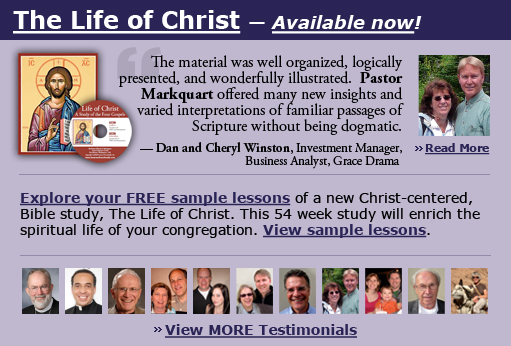
_____________________________________________________________________________ EPIPHANY 3A Matthew 4:18-22 EPIPHANY 3B Mark 1:14-20 EPIPHANY 5C Luke 5:1-11 The following Bible study is from a larger course entitled THE LIFE OF CHRIST: A Study in the Four Gospels. This 54 week course for the laity will be available for congregations in 2007. Basic text for the course: SYNOPSIS OF THE FOUR GOSPELS, Kurt Aland, English Edition, P. 33-34. _________________________________________________________________________________________ #34. THE CALL OF THE FIRST DISCIPLES Matthew 4:18-22, Mark 1:16-20, Luke 5:1-11, John 1:35-51 Fishing was a popular trade on the Sea of Galilee. Fishing was the most common occupation for people residing in the small villages of Capernaum and Bethsaida which were located on the lakeshore. Living on the shores of Lake Galilee with its abundant supply of fish, people understood fishing perhaps more than they did farming. Living on the shores of a fishing lake, the whole town was "into fishing." The message of this particular Biblical text is that the disciples were called to become "fishers of men" or fishers for people." Jesus used the metaphor of fishing because people in a fishing village with numerous fishermen would "get it." These people intutiively understood fishing because it was a way of life for them. Fishing was their livlihood, their way of making a living, their primary way of putting food on their tables. Jesus told his first disciples that they were to "fish for people" and were to "catch people" for Jesus Christ. Jesus could not have chosen a better metaphor to help his first disciples understand what their job was: to fish for people and to catch people for Jesus Christ. Fishermen understood what he meant by that. Jesus always used metaphors that his common and ordinary disciples could understand. The meaning of this story two thousand years later is that we contemporary disciples are to become fishers for men and women, boys and girls. We are to fish for people. But not merely fish but we are to catch people for Jesus Christ. That was the first and basic mission of the first disciples and the early church and the church two thousand years later. Experienced fishermen and fisherwomen make a distinction between "fishing" and "catching." Some fishermen spend a whole lot of time "fishing" for fish but not much time "catching" them. In Jesus' metaphor about fishing, it seems that Jesus was suggesting that his disciples both "fish" and "catch" other people for Jesus Christ. (See Luke 5:11 " "Do not be afraid; from now on you will be catching people.") The gospels agree on the first fundamental tenet of discipleship: God uses disciples to "catch people" for Jesus Christ. This is the first thing that Jesus said to his disciples, and this statement about fishing set the tone for the rest of his ministry. We hear this same thing at the last teaching of Jesus during his Ascension. In Matthew 28:19, Jesus said, "Go therefore and make disciples of all nations, baptizing them in the name of the Father and of the Son and of the Holy Spirit, and teaching them to obey everything that I have commanded you. And remember, I am with you always, to the end of the age." We find the same theme in the Gospel of John where the disciples asked their family and friends to "come and see" Jesus. The two phrases, "come and see Jesus" and "catch people for Jesus, " mean the same thing. We Christians are called to be evangelists, fishermen and fisher women. We are called to be disciples who say to others, “Come and see Jesus.” You cannot be an effective evangelist unless you have caught by Jesus Christ. You cannot be an effective evangelist unless you have come and seen Jesus for yourself. We need to speak to others out of our personal experience of having been caught by Jesus Christ, of having come and seen the goodness and greatness of the love of God in Jesus. After Jesus’ words to his disciples to “follow him,” Jesus then tells his disciples that they will “become” fishers of men. In their years together, Jesus will teach his disciples to become evangelists. Centuries later, disciples are still learning to become "fishermen" for Jesus Christ. We, the church, often make foolish mistakes. That is, we talk about fishing but never get around to fishing. Or we ask people to come and see the programs and possibilities of our congregation rather than inviting people to see and know the the presence, power and person of Jesus Christ. Today, certain denominations are more evangelistic than others e.g. the Mormons are more evangelistic than other denominations. The Mormon church, regardless of one’s beliefs that the Mormon denomination does not teach the truth about Jesus Christ, is growing by leaps and bounds here in the United States. Other denominations are not. Why? One reason is that Mormons youth spend two years in training to be missionaries and their intensive training in evangelism makes a difference. The young Mormon missionaries are then sent out two by two, and we are all aware of seeing those young men in their dark suits, walking or riding their bicycles through a neighborhood. In other words, Mormon young people learn how to become "fishmen" for Christ. As Christians, we are not automatically evangelists or fisherman/fisherwoman. It took Jesus one to three years to teach his disciples to become evangelists. We too need to be in the process of becoming fishermen for Christ and witnesses for the gospel. Take some time and examine some of the details and differences between these four versions of similar stories. Each of the four gospels tells its version of the story in a slightly different manner. Matthew, Mark and Luke have parallel stories and John’s version is very different than the synoptic gospels. Learn to live with the differences between the synoptic accounts (Matthew, Mark and Luke) and John. They are different in hundreds of ways. Don’t try to reconcile the differences between them. Specifically, the first three gospels talk about the call of two sets of brothers who were in the fishing trade: Peter and Andrew, then James and John. The Gospel of John tells us a story about the first week in Jesus’ life, beginning with stories about Andrew and Peter and then Philip and Nathaniel. Notice that Luke also has a most interesting version of this story. We discover for the first time that Luke is one fantastic storyteller. We will soon discover that Luke is the author of many of the best parables from Jesus’ life. Some scholars say that Jesus/Luke is the “father of the short story.” We only recall his stories of the Prodigal Son, the Rich Man and Lazarus and Mary and Martha to know that Luke was a gifted storyteller. The Gospel of John has several interesting twists: Jesus changes Simon’s name to Peter which means rock, and Peter’s faith and personality became the rock of the earliest church. The change of name symbolized a change of identity. The Gospel of John tells us that Nathaniel experienced a miracle in that Jesus had previously seen Nathaniel and knew beforehand details about Nathaniel’s life. Nathaniel confessed, “You are the Son of God.” Right from the get-go in John’s gospel (story about Nathaniel) and consistently throughout his gospel, we discover that Jesus is the Son of God. In the Gospel of John, Jesus is declared "the Son of God" in thirty-nine different places. In John’s gospel, we hear those classic words, “Come and see. Come and see the Messiah.” We will examine two versions of the call of the first disciples: Luke and Mark/Matthew.
Luke’s version of the call of the first disciples: Epiphany 3C -Once while Jesus was standing beside the lake of Gennesaret, and the crowd was pressing in on him to hear the word of God, Jesus was almost instantly popular with the crowds of people. We can feel the crowds of people on the shore of Lake Galilee. We know that this lake was a good resource for fish and that fishing was a common trade. We can imagine a crowd pressing in on Jesus, eager to hear him teach the word of God. http://www.keyway.ca/htm2002/seagal.htm
Notice that the land is barren of lakes except the large Sea of Galilee. This land does not look like the 10,000 lakes of the State of Minnesota. Nor were there any lakes or streams to be found in and around Jerusalem. We recall that Jesus spent his adulthood in fishing village of Capernaum and Peter was from the fishing village of Bethsaida, both on the shores of Lake Galilee. In other words, Jesus used the primary metaphor about fishing with people who understood fishing. http://www.christiananswers.net/bibleplaces/home.html
Look carefully at his visual taken from an airplane above the north end of the Sea of Galilee. Note the location of Capernaum and Bethsaida. http://www.bibleplaces.com/seagalilee.htm.
"More properly designated a lake, the Kinneret (the OT and modern name) is thirteen miles by seven miles. It is a large body of water. At its deepest point the lake is only 150 feet deep." "The peaceful calm of the Sea of Galilee can quickly become transformed by a violent storm. Winds funnel through the east-west aligned Galilee hill country and quickly stir up this large lake. Still more violent come off the hills from the Golan Heights to the east. Trapped in the basin of the lake, the winds can be deadly to fishermen. A storm in March 1992 sent waves ten feet high crashing into downtown Tiberias and causing significant damage." -He saw two boats there at the shore of the lake; the fishermen had gone out of them and were washing their nets. Luke, our insightful narrator, knows the details of this story: two boats, the shore of the lake, the fishermen were not in their boats but were washing the nets on the shores. These are wonderful details given to us by someone who knew the story. http://www.paulmcintyre.co.uk/Images/55t.jpg In the story, we hear about the fishermen repairing their nets. Below are visuals about fishermen repairing their nets. http://www.edinphoto.org.uk/0_a_l/0_around_edinburgh_-_newhaven_fishermen_moe038_mending_nets.jpg
http://www.garycook.co.uk/Africa/Malawi/Photo47464.jpg
Carefully examine the boat picture below which was first discovered in 1986. It was a dry year that year in the area of the Sea of Galilee. This boat was found and became one of the most important archeological finds of recent years. Remember that the boat was 26 feet long. This boat was not a small row boat but a large fishing vessel. Perhaps Smon and his friends had similar boats.
"In 1986 a boat (crude in today's terms) thought to be some 2,000 years old was found buried in the sand along the shore of the Sea of Galilee. This wooden vessel from the first century was discovered near Nof Ginnosaur on the lake's northwestern shore. Studies have determined the type of wood was used (mainly cedar and oak), the style of construction (mortise and tenon joints), the date (on the basis of construction techniques, pottery and Carbon 14 tests) and the size (26 by 7 feet - big enough for 15 men)." Remember: 26 feet long; room for 15 men.
"Three types of fish were primarily sought by fishermen in antiquity in these waters. Sardines like were the "two small fish" that the boy brought to the feeding of the 5000. Sardines and bread were the staple product of the locals. Barbels are so known because of the barbs at the corners of their mouths. The third type is called musht but is more popularly known today as "St. Peter's Fish.” This fish has a long dorsal fin which looks like a comb and can be up to 1.5 feet long and 3.3 lbs in weight."
-He got into one of the boats, the one belonging to Simon, and asked him to put out a little way from the shore. Again, notice the detail of the story. One boat belonged to Simon, and Jesus got into his boat and not the other one. These are all colorful details that add to the authenticity of the scene. Jesus asked Peter to put out a little way from shore. Again, this is a vivid memory of a specific scene from Jesus' life. -Then he sat down and taught the crowds from the boat. A person can easily imagine Jesus teaching crowds of people sitting on a lakeshore while he was in a boat talking to them. Circle the words, "then he sat down." What a detail. Peter recalls that Jesus sat down in the boat and began teaching the crowds from ... his own...boat. -When he had finished speaking, he said to Simon, "Put out into the deep water and let down your nets for a catch." From the beginning, the reader understands that Jesus was interested in something more than simply catching fish. Jesus knew enough about fishing that the fish were not to be caught in shallow water right off the shore but in deeper water. -Simon answered, "Master, we have worked all night long but have caught nothing. Yet if you say so, I will let down the nets." Simon was the professional fisherman; Jesus was not. The disciples were not fishing with a fishing rod, reel, line and hook but a fishing net. The disciples were fishing with nets, most likely seigning nets. Already, Simon was addressing Jesus as "master." Yes, he Peter will do as Jesus asked. Underline the phrase, "if you say so." Already, Peter's heart was being caught by the love and spiritual authority of Jesus, so much so that Peter would act against his better fishing senses and go fishing again, even though he had caught nothing all night. He may have been thinking to himself, "Jesus is a good religious teacher but not much of a fisherman."
http://www.ohs.org/education/oregonhistory/_files/_doc_files/GillNetterRosterRock1891P260.jpg
In the picture above, we can see two boats and four fishermen. With gillnets and not fishing rods. This scene may have been similar to the scene on the lake that day.
http://www.wcg.org/lit/bible/lessons/fishing%20net%20&%20rope%20copy.jpg
In the picture above, we think of nets rather than rods and reels.
http://www.kinneret.co.il/holyland/boatx.jpg
In the above picture, we can imagine Peter casting out the net from a large fishing boat. -When they had done this, they caught so many fish that their nets were beginning to break. So they signaled their partners in the other boat to come and help them. And they came and filled both boats, so that they began to sink. Whoa!!! There were lots of fish, so many fish that they began to sink both boats. What a miracle. What a parable. What a sign for these first disciples. The implication is that there will be numerous people "caught" for God/Christ and the ways of God. That will become the primary purpose of the disciples: to catch numerous people for Jesus Christ. That will become the primary purpose of the church: to catch numerous people for Jesus Christ. There were so many fish that the nets broke and the implication was that there will so many people caught for Jesus Christ that nets/buildings/stadiums can't hold them. As a preacher preaches this sermon, we think of images of fullness. http://www.bluegreenpictures.com/i/39/119262.jpg
There were partners in the other boat. We will discover that they were James and John. -But when Simon Peter saw it, he fell down at Jesus' knees, saying, "Go away from me, Lord, for I am a sinful man!" Like Isaiah in the Old Testament, when he experienced the holiness of God, he said, “I am a sinner, a big time sinner, a sinner through and through.” Such was the attitude of Peter. Circle the word, Lord. Even without knowing it, Jesus had become Simon Peter's "Lord."
http://www.jesusmafa.com/anglais/imag15.htm Mafa
The painting above is from the African Mafa. Mafa usually has Jesus wearing the color red. We can see Peter kneeling before Jesus, confessing his sin. We can see an African re-creation of this scene, with two boats, four fishermen, and swarms of fish in the boats and in the net as well. http://www.nga.gov/cgi-bin/pimage?95581+0+0 Bassano
In the above picture by an Italian,. Bassano, we clearly focus on Peter kneeling before Jesus. Ruebens
-For he and all who were with him were amazed at the catch of fish that they had taken; and so also were James and John, sons of Zebedee, who were partners with Simon. As human beings, we are always amazed at miracles, at the ways that God enormously blesses us at certain specific times in our lives. In his mind, Peter knew that he was experiencing a miracle, that the Lord God had intervened in his life at this particularly life-changing moment. Like all good fishermen, Peter remembered the miraculous size of the catch that morning and he knew that the Lord Jesus was sending him in a new direction: to catch numerous other people for Jesus Christ, for the gospel, for the kingdom and the ways of God. Then Jesus said to Simon, "Do not be afraid; from now on you will be catching people." Underline it. Highlight it. Memorize it. Write it down on your memory page on p. 362. “Do not be afraid. From now on you will be catching people.” Many of us Christians are afraid of being evangelists, missionaries, and fishing for Jesus Christ. We need to hear Jesus’ words to his first disciples. “Do not be afraid.” Jesus spent three years teaching his disciples how to catch people. From our community of disciples today, we want to learn how to fish for Jesus Christ. Many or most mainline denominational Christians are afraid of "fishing for and catching people" for Jesus Christ. Jesus' words are prophetic for our modern generation two thousand years later who have become fearful and nervous about this fundamental mission of the church. Jesus didn't say, "From now on you will be fishing for people." He said, "From now on, you will be catching people." Jesus had an enormous mission for his life and the lives of his disciples: to catch people for the gospel. The centuries have flown by and now the disciples of Jesus Christ number in the billions. No net can contain the number of disciples who have been caught by the love of Jesus Christ. -When they had brought their boats to shore, they left everything and followed him. Circle the word, "everything," and remember that Luke, more than the other gospel writers, has the disciples leaving "everything." Luke uniquely emphasizes leaving EVERYTHING. Recall Luke 14:33 where Jesus says, "Whoever of you does not renounce ALL he has, cannot be my disciple." The Gospel of Luke adds the little word, "all." In Luke 18:22, again uniquely in Luke, "sell ALL you have and distribute it to the poor." Only the Gospel of Luke inserts that little word, "all." Similarly in the call of the first disciples, Luke adds the word "everything" e.g. "they left EVERYTHING and followed him." (Luke 5:11) Circle the word, "followed." That is the essence of discipleship. We will find the same word, "follow," in Mark's version of the story. When we think of the word, "follow," we don't think of a soldier following orders but of a sheep following a shepherd. A sheep follows behind the shepherd.
Matthew and Mark’s version of the story of the call of the first disciples: Epiphany 3A, 3B - Now after John was arrested, Jesus came to Galilee, proclaiming the good news of God, and saying, "The time is fulfilled, and the kingdom of God has come near; repent, and believe in the good news." The time was specific: After John the Baptist was arrested. The location was specific: in Galilee. Jesus' message was summed in one phrase, "proclaiming the good news of God." Underline. Highlight. Emphasize. This is the central activity of Jesus. "The time is fulfilled." This time is the special time, the kairos time, the prime time for God to come to this earth as a human being. "The kingdom of God" is the number one truth taught by Jesus. God's reign has arrived in the person of Jesus. The reign of God is as near as Jesus. "Repent." Change your ways. Change your sinful habits, sinful thoughts, sinful attitudes. Change your way of thinking, being and doing. "Believe the good news." Underline. Highlight. Emphasize. Jesus invites us to believe the gospel, the good news about God, the good news which will be revealed in him, his ministry, and his resurrection. Proclaim the good news. Believe in the good news. The good news is the gospel and the gospel is the central truth of the Christian faith. The gospel is the good news of Jesus, his love, his forgiveness, his resurrection, his gift of eternal life, his being with us in all circumstances no matter what, on this day and forever more. -As Jesus passed along the Sea of Galilee, he saw Simon and his brother Andrewcasting a net into the sea—for they were fishermen. We can imagine Peter and Andrew casting their net out into the lake in order to catch fish. We can see the two men with their hand nets. Peter and Andrew didn't have a fishing pole, line, sinker and hook but a small hand net that they could cast off shore. Focus on the word, "fisherman." These fishermen were common and ordinary people. They were not the educated elite of Jesus' day. They were not rabbis who had been to rabbinic school. These fishermen were about as common as Jesus could have selected to be his first disciples. Jesus selected common folk way back then and stil selects common people to do his ministry. -And Jesus said to them, "Follow me and I will make you fish for people." Peter and Andrew must have known about Jesus to leave their nets and boat and follow Jesus immediately. Jesus must not have been a stranger to them for them to follow Jesus so quickly. Circle the word, "follow." That is the essence of discipleship. We found the same word, "follow," in Luke's version of the story. When we think of the word, "follow," we don't think of the metaphor of a soldier following orders but of a sheep following a shepherd. A sheep follows behind the shepherd. A disciple of Jesus follows behind Jesus. Jesus in our leader and we follow in his paths and footsteps. The first activity after following Christ is to fish for people and to catch other people for the gospel, for the kingdom. To catch other people whose lives will be ruled by the love and ways of God. Discipleship and fishing for people belong together. You can't have one without the other. "For people." The Greek word is not to "fish for men" but "fish for people." The Greek word for "people" is "anthropoi" from which we get our word, "anthropology," which is the study of human beings. "Fishing for men" is not an accurate translat ion of the Greek word, "anthropoi." -And immediately they left their nets and followed him. Circle the word, "immediately." This is a favorite word in the Gospel of Mark. These two fishermen saw in Jesus something that they were looking for. -As he went a little farther, he saw James son of Zebedee and his brother John, who were in their boat mending the nets. Jesus found two more fishermen, and they also were brothers. From Luke's gospel, we know that they were fishing partners of Peter and Andrew. -Immediately he called them; and they left their father Zebedee in the boat with the hired men, and followed him. Peter and Andrew. James and John. We have the first four disciples. The other eight will soon be added. Circle the words, "follow him." That is the essence of discipleship: to follow Christ. Jesus did not explicitly say to James and John that they were going to be "fishing for people" but such thoughts are implied in the text. Peter, James and John will become the "big three" disciples, being present at Jesus' Transfiguration and in the Garden of Gethsemane. We will gradually discover that James and John are the "sons of thunder;" that is, they had hot tempers and called God to destroy the city in front of them. There were other hired men in the boat with the father, Zebedee. -They went to Capernaum; and when the Sabbath came, he entered the synagogue and taught. They were astounded at his teaching, for he taught them as one having authority, and not as the scribes. We know that Capernaum was a fishing village on the shores of Lake Galilee. We know the location of the synagogue in Capernaum from archeological digs. Circle the words, "taught," "teaching," and "taught." Jesus was and still is the rabbi who is forever teaching us about God, the reign of God, that God can rule peoples' hearts and lives. Jesus taught with authority and authenticity. Persistently, we hear this theme during the story of Jesus' love. Jesus was a master teacher who taught about God, the ways of God, the rule of God in people's lives, that God could rule peoples' thoughts, minds, hearts, habits, and ways of living. Jesus taught with authority, with a conviction that this way of living was not a game or religion for the weekend or whenever convenient. Jesus taught with authority and conviction that his teachings mattered greatly; that what he said was a matter of life and death. DISCUSSION QUESTIONS: WHAT DOES IT MEAN FOR YOU TO BE A FISHERMAN, A FISHERWOMAN FOR CHRIST? WHAT DOES IT MEAN FOR YOU TO FISH FOR PEOPLE? WHAT DO YOU THINK IS THE DIFFERENCE BETWEEN "FISHING FOR PEOPLE" AND "CATCHING PEOPLE" FOR JESUS CHRIST?
|


